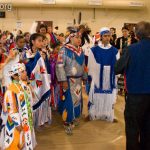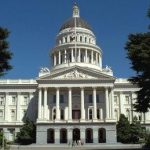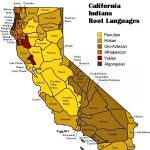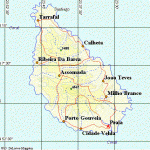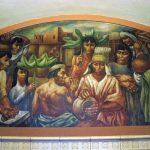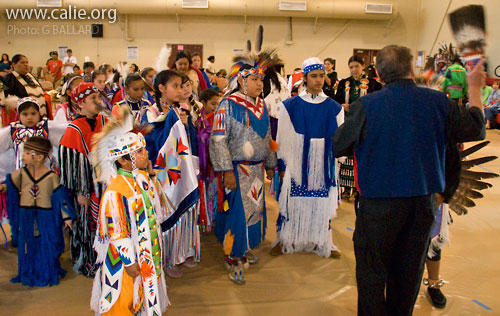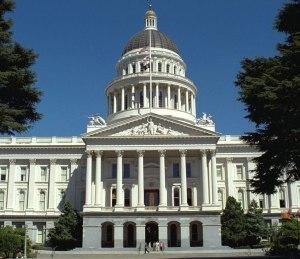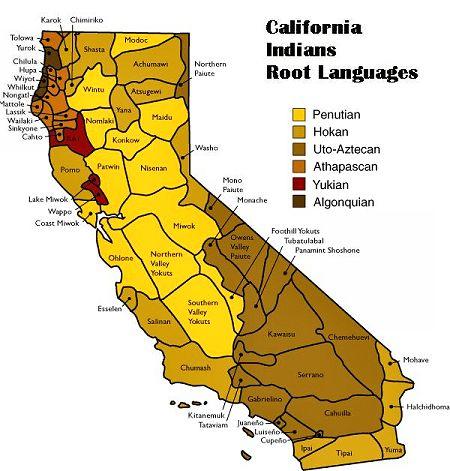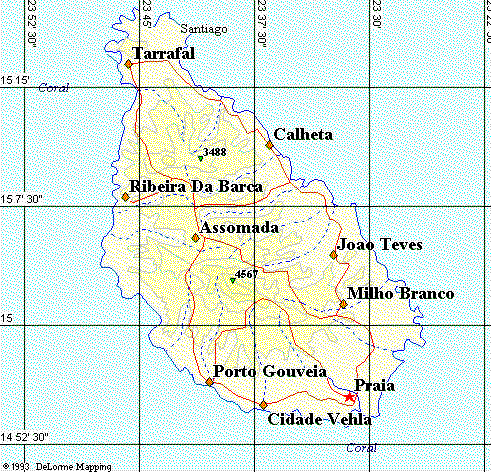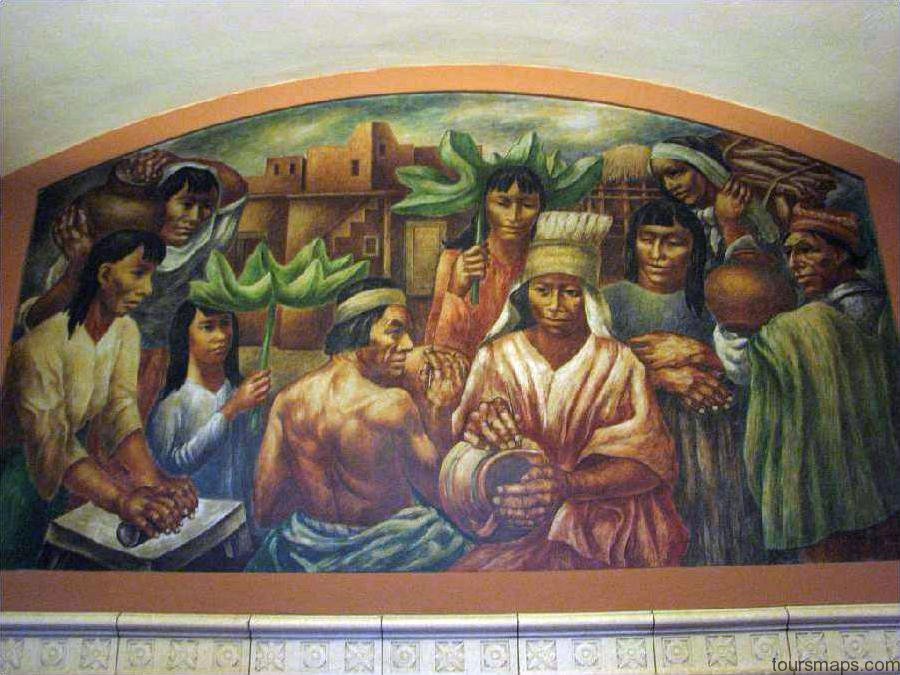Latinos have contributed to the vibrancy of California culture. They have contributed to the socioeconomic, political, and cultural life of California in multiple ways through the arts, culinary traditions, architecture, music, politics, popular culture, and everyday activities that bring life, character, and continued vitality.
In California kitchens, Mexican and other types of Latin American food have become ubiquitous in California; it is not uncommon, especially in southern California, to find Latin American supermarkets, restaurants, puestos (food vendor stands), traditional foods, and Latin American candies. Tacos, tamales, empanadas, pupusas, clayudas, and various salsas are evidence of a much larger culinary tradition that is the result of the cultural and ethnic hybrid that defines California cuisine.
One notable form of contemporary Latino artistic expression has been mural-ism. Murals decorate the walls of buildings throughout cities like Los Angeles, San Francisco, San Diego, and San Jose, with portraits of Latinos and images chronicling Latino history and struggle. The artistic creations, like those found in Chicano Park in San Diego, provide living testament of Latino cultural and artistic expression. Located under the San Diego freeway, Chicano Park contains a conglomeration of outdoor murals, sculptures, earthworks, and architectural pieces. The importance of this site was officially recognized as a San Diego Historical Site in 1980. In Los Angeles, works like the Great Wall of Los Angeles, depicting the history of ethnic people of California, is another example of notable cultural contribution by Latinos.
California Latinos have also produced award-winning literary contributions. Poets like Cherrie Morraga and Lorna Dee Cervantes; essayists like Richard Rodriguez; and novelists like Maria Amparo Ruiz de Burton have produced works that capture the Latino experiences of discrimination, exploitation, and perseverance. The literary works by Latinos have contributed significantly to critical reexaminations of feminist theory, gay and lesbian studies, Latino studies, and American history.
Other contributions to popular culture include Latino theater, movie, and film productions. In 1979 Luis Valdez’s Zoot Suit, commemorating the riots of 1943, became the first Chicano play to appear on Broadway. The performance troupe Culture Clash (Richard Montoya, Ric Salinas, and Herbert Siguenza), founded in San Francisco in 1984, attained national recognition in 1993 through their sketch comedy television series, also called Culture Clash. More recently, George Lopez, the syndicated situation comedy that aired on ABC from 2002 to 2007, represents another significant cultural contribution by Latinos in the media. Latinos have also made inroads in the field of motion pictures, an important California cultural industry, producing documentaries and feature films.
Beyond these contributions, the Latino presence in California has made unmistakable linguistic contributions toward increasing the rise of bilingualism in California. According to the U.S. Census Bureau, 26 percent of people in California speak Spanish at home. The prominence of Spanish language throughout the state is evident on billboards, street signs, radio channels, and print media.
The cultural contributions made by Latinos have been so significant that in recent years, scholars and others have used terms such as Mexifornia and Oaxacalifornia to acknowledge the transformation of California by migrants into a dynamic, transnational cultural space.
1. According to a recent survey by the Pew Hispanic Center, Mexicans account for 84 percent of the Latino population in the state. Source: Survey Brief: Latinos in California, Texas, New York, Florida and New Jersey. Pew Hispanic Center, March 2004. Available online at: http://pewhispanic.org (accessed March 25, 2007).
bibliography
Acuna, Rodolfo. Greasers, Go Home: Mexican Immigration, the 1920s. In The Latino Condition: A Critical Reader. Eds. Richard Delgado and Jean Stefancic. New York: New York University Press, 1998, 86-91.
Early Chicano Activism: Zoot Suits, Sleepy Lagoon, and the Road to Delano. In The Latino Condition: A Critical Reader. Eds. Richard Delgado and Jean Stefancic. New York: New York University Press, 1998, 309-319.
Alvarez Jr., Robert. The Lemon Grove Incident: The Nation’s First Successful Desegregation Court Case. Journal of San Diego History 32 (1986). http://www.sandiegohistory. org/journal/86spring/lemongrove.htm.
Balderrama, Francisco E., and Raymond Rodriguez. Decade of Betrayal: Mexican Repatriation in the 1930s. Albuquerque: University of New Mexico Press, 1995. Blackmer-Reyes, Kathy. History of MALCS. MALCS Web site. 2004. http://malcs.net/ history.htm.
California Latino Caucus. Historical Overview of the Latino Caucus. 2007. http://democrats.assembly.ca.gov/latinocaucus/history_purpose.htm.
California Missions Tourist Information. http://www.californiamissions.com.
Carrasco, Gilbert Paul. Latinos in the United States: Invitation and Exile. In The Latino Condition: A Critical Reader. Eds. Richard Delgado and Jean Stefancic. New York: New York University Press, 1998, 77-85.
Cesar Chavez Foundation. http://www.Chavezfoundation.org/cesareChavez.html.
Civilrights.org. Civil Rights: A Chronology. 2002. http://www.civilrights.org/library/permanent_ collection/resources/crchron.html.
Democracy Now! Between 500,000 to 2 Million Take to the Streets of L.A. to Demonstrate against Anti-Immigrant Bill. 2006. http://democracynow.org/article.pl?sid=06/03/27/ 1449257.
Driscoll, Barbara. The Tracks North: The Railroad Bracero Program of World War II. Austin: University of Texas, CMAS Books, 1999.
Ganster, Paul, and David E. Lorey. The U.S.-Mexican Border into the Twenty-First Century. Boulder, CO, and New York: Rowman and Littlefield Publishers, 2008.
Garrahan, Matthew. LA and El Salvador Act over Gang Crime. MSNBC, 2007. http://www.msnbc.msn.com/id/18425327.
Hayes-Bautista, David. La Nueva California: Latinos in the Golden State. Berkeley: University of California Press, 2004.
Justice for Janitors. http://www.seiu1877.org/articles/article.cfm?ID=3660.
Marentes, Carlos, and Cynthia Marentes. We Have Fed You All for a Thousand Years. Farmworkers Web site, 1999. http://www.farmworkers.org/strugcal.html.
Munoz, Rosalio. 1970: Chicano Moratorium 2005: Latinos for Peace. People’s Weekly World Newspaper, August 12, 2005. http://www.pww.org/article/view/7591/1/283.
National Park Service. A History of Mexican Americans in California. In Five Views: An Ethnic Historic Site Survey of California. http://www.cr.nps.gov/history/online_books/ 5views/5views5.htm.
Nevins, Joseph. Operation Gatekeeper: The Rise of the Illegal Alien and the Making of the U.S.-Mexico Boundary. New York: Routledge, 2002.
Oboler, Suzanne, and Deena Gonzalez. The Oxford Encyclopedia of Latinos and Latinas in the United States, Volume 1. New York: Oxford University Press, 2005.
Olvera Street. http://www.olvera-street.com.
PBS. The Border: History (Text Timeline). http://www.pbs.org/kpbs/theborder/history/ index.html.
PBS. The History of Chavez Ravine. http://www.pbs.org/independentlens/Chavezravine/ cr.html.
PBS. People & Events: The Zoot Suit Riots of 1943. http://www.pbs.org/wgbh/amex/zoot/ eng_peopleevents/e_riots.html.
Pew Hispanic Trust. http://www.pewhispanic.org.
Pitti, Stephen. Devil in Silicon Valley: Northern California, Race, and Mexican Americans. Princeton, NJ: Princeton University Press, 2004.
Schevitz, Tanya. California Minorities Become Majority: Census Reflects Surge among Latinos, Asians. San Francisco Chronicle, August 30, 2000. http://www.sfgate.com/ cgi-bin/article.cgi?file=/chronicle/archive/2000/08/30/MN3103.DTL.
California cultural contributions Photo Gallery
Maybe You Like Them Too
- Top 10 Islands You Can Buy
- Top 10 Underrated Asian Cities 2023
- Top 10 Reasons Upsizing Will Be a Huge Travel Trend
- Top 10 Scuba Diving Destinations
- The Best Cities To Visit in The World

